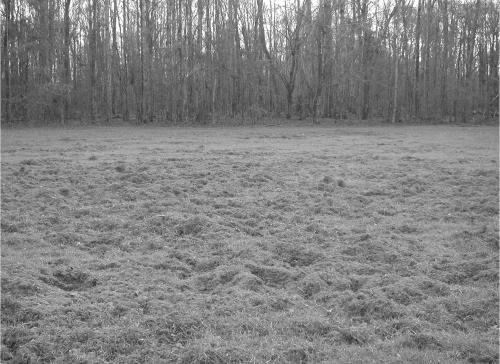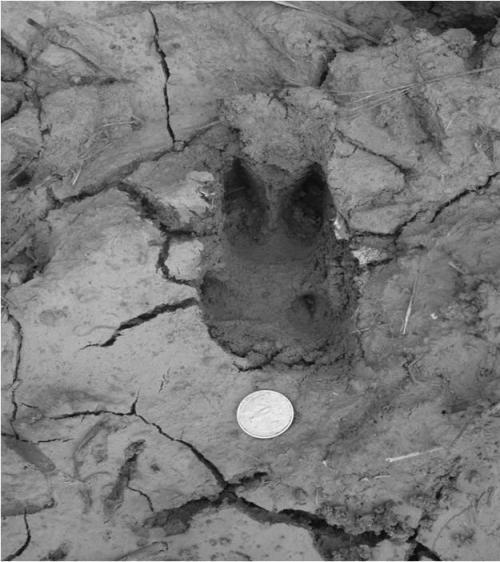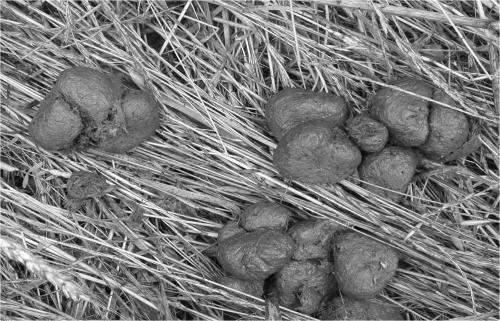Feral Hogs in Indiana – What it Means for You By Brian MacGowan and Joe Caudell Domesticated pigs (originally bred from Eurasian wild boar about 8,000-10,000 years ago) were intentionally introduced into the New World by Christopher Columbus. Since then, they have expanded due to numerous releases for hunting and open range livestock practices. Today, feral pigs and Eurasian boar hybrids are numerous and widespread throughout the United States. Feral hogs are variable in appearance ranging in black to multicolored. They are very adaptable and can be observed in a variety of habitats although dense brush and cover is preferred. Feral hogs have social groups or "sounders" that include adult females and piglets – adult males are solitary. Their size is variable with average adult weights of about 75-250 pounds. Due to the problems discussed below, feral hogs have received increasing attention from wildlife professionals around the country. The good news for Indiana is their range is limited and their control is manageable. However, while they have been reported in Indiana since the early 1990’s their primary breeding range is limited to only a few counties including Jackson, Lawrence, and Wayne counties. However, it is important to know that a wild hog, such as escaped domestic hogs, illegally released Eurasian boar, or even Vietnamese pot bellied pigs, could be encountered in almost any county in Indiana. Any sighting of a wild hog can be reported to USDA APHIS Wildlife Services at 765- 404-0382. Disease threats from feral swine include domestic diseases such as trichinosis, tularemia, swine brucellosis, and pseudorabies, and foreign animal diseases such as classical swine fever. Feral hogs can damage crops including corn, wheat, melons and pastures. Feral swine are also known to eat and damage morel mushroom patches. They can also impact native wildlife by consuming eggs of ground nesting birds or outcompeting others for resources including hard mast (e.g., acorns). Tusking and rooting by feral pigs can also damage dikes and impact forest restoration. Laws in Indiana Laws are designed to facilitate the elimination of feral hogs in Indiana while eliminating future introductions which is thought to be a major contributor to their population growth across the country. Feral swine can be taken year round by any legal means. However, the possession and relocation of live feral hogs is illegal in Indiana. Contact the Indiana Department of Natural Resources for more information about feral hog laws. What Can Landowners Do? Damage caused by feral hogs is substantial in the southeastern United States. Wildlife professionals need your help in identifying where feral hogs occur in Indiana
Figure 1. Example of rooting damage in a pasture caused by feral hogs. Damage can lead to equipment damage and costly repairs for landowners. Picture by Alabama DCNR-WFF Chris Jaworowski, Wildlife Biologist Problems Caused by Feral Hogs
Figure 2. Feral hog tracks can be difficult to distinguish from white-tailed deer tracks. Compared to white-tailed deer, feral hog tracks are more rounded at the tips of the hooves and have widely spread dew claws. Picture by Alabama DCNR-WFF Chris Jaworowski, Wildlife Biologist
Figure 3. The characteristic scat of feral hogs is a reliable sign of their presence in an area. Picture by Alabama DCNR-WFF Chris Jaworowski, Wildlife Biologist Additional Information Sources
West, B. C., A. L. Cooper, and J. B. Armstrong. 2009. Managing wild pigs: A technical guide. Human-Wildlife Interactions Monograph 1:1-55. www.berrymaninstitute. org/publications
Indiana Wildlife Conflicts Information Website, http://www.ag.purdue.edu/entm/wildlifehotline/pages/default. aspx
National Feral Swine Mapping System, www.feralswine. org.
Brian MacGowan is an extension wildlife specialist with Purdue University’s Department of Forestry and Natural Resources, macgowan@purdue.edu. Joe Caudell is a wildlife disease biologist with the USDA AHIS Wildlife Services, Joe.N.Caudell@aphis.usda.gov.



